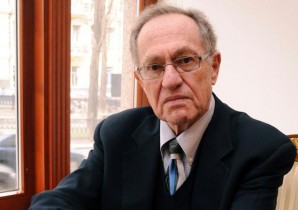
In an interview earlier this month with CNN anchor/correspondent Max Foster, Harvard Law School professor Alan Dershowitz said this:
“The evidence against [Amanda Knox] is very, very considerable. You wouldn’t know that by listening to the American media that has been saying repeatedly that there’s no evidence against her. She falsely accused somebody of committing the crime, she created a false alibi, she first admitted she was at the scene of the crime, they found forensically that multiple people had to commit the murder, the person who was convicted in the murder said she did it. The evidence is very, very considerable, now that may not be enough to persuade everybody or even to go beyond a reasonable doubt but for people who say there’s no evidence, they’re just not telling the truth. There is considerable evidence and she would probably be extradited under the law if the conviction were confirmed.”
Alan Dershowitz’s comments betray only a superficial understanding of the facts of this case. As opposed to his beliefs, it is, in fact, true that there is no evidence against Amanda Knox.
Mr. Dershowitz offers five specific examples of evidence for guilt, but all of them are weak, if not completely false. One example is without any merit and cannot be supported logically. The claim that Amanda created a false alibi is not evidence that she was involved in the crime, because the only way it can be made is by engaging in circular reasoning by presuming guilt.
Dershowitz also claims that Amanda falsely accused someone of committing the crime, and that she admitted she was at the scene. The reality is that statements to that effect were typed in Italian by police, who then required Amanda to sign them. The statements contained information the police wanted to convey, not information Amanda wanted to convey. The essential conflict, though, is that the statements are legally irrelevant. Those who respect the Italian legal system should respect the fact that in 2008, the Italian Supreme Court excluded the use of the two statements from the murder trial of Amanda Knox, primarily because they were obtained from her while authorities improperly withheld access to legal counsel.
If Italy requests the extradition of Amanda from the United States, it must be noted that the two nations’ mutual extradition treaty already has been broken. As indicated by the 2008 Italian Supreme Court ruling, Italy violated its own constitution by depriving Amanda of her human rights under Italian law when they did not provide her with a lawyer during interrogations.
Next, Dershowitz claims that it was found forensically that multiple individuals had to have committed the crime. On the contrary, in the summary of the judges’ motivations for the first trial of Knox and Sollecito, all six of the forensic scientists consulted on the matter of the autopsy are cited as having asserted unanimously that the evidence did not allow them to conclude the crime was committed by more than a single attacker. Only by fiat was the lead judge able to reach a decision that defied all of the forensic consultants’ opinions.
If a multiple-attacker theory resulted from the separate, individual trial for Rudy Guede (the person who was convicted of the murder), it is irrelevant to the guilt of Knox and Sollecito, as Guede’s court’s duty was to rule exclusively on Guede, not to identify potential abettors.
Finally, Dershowitz states that the person who was convicted of the murder said Amanda did it. Yet, before he was arrested, Rudy Guede, having seen news coverage about the crime, confided to a friend in a recorded conversation that Amanda Knox was not at the cottage the night of the murder. Hence, it is just as accurate to state that Guede said Amanda did not do it.
It was not until four months later, after continuous consultations (persuasions?) with his attorneys and the attorneys working for the prosecution case, that Rudy Guede officially accused Knox and Sollecito of involvement. Over time, Guede had told a number of stories, all of which excluded himself as the actual murderer. Dershowitz can give Guede credibility if he wants to, but he should keep in mind that none of Guede’s proposed versions of the crime has ever matched any of the prosecutors’ proposed versions of the crime.
To summarize, the evidence Alan Dershowitz has offered above is much, much less than considerable.
Regarding the extradition process, on which Dershowitz also commented in the CNN interview, it should go without saying that the process is not simply a matter of quid pro quo between nations. A legitimate case must be made for every request, and every case must be studied carefully. A truly in-depth study of this case always finds not only no evidence for Knox’s guilt, but also reveals that she was falsely accused, falsely imprisoned and falsely convicted.
To watch the CNN interview with Alan Dershowitz:
 Wrongful Conviction News an Injustice anywhere website
Wrongful Conviction News an Injustice anywhere website
